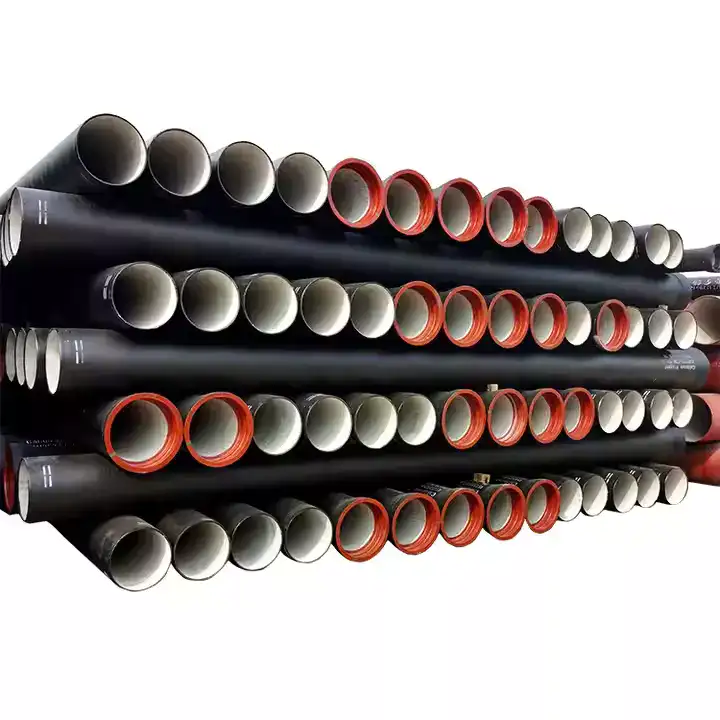Ductile iron pipes are widely used in water and wastewater infrastructure due to their strength, durability, and cost-effectiveness. However, like all metallic materials, they are susceptible to corrosion when exposed to certain environmental conditions. Cathodic protection (CP) is a technique employed to mitigate this corrosion. This article delves into the necessity of cathodic protection for ductile iron pipes, exploring corrosion mechanisms, protection methods, industry standards, and best practices.

Understanding Corrosion in Ductile Iron Pipes
Mechanisms of Corrosion
Corrosion in ductile iron pipes primarily occurs due to electrochemical reactions between the metal and its environment. When the pipe is buried in soil or submerged in water, it can become the anode in a corrosion cell, leading to the deterioration of the metal. Factors influencing corrosion rates include soil resistivity, moisture content, oxygen availability, and the presence of aggressive ions such as chlorides.
Corrosion Effects on Ductile Iron Pipes
Corrosion can lead to several detrimental effects on ductile iron pipes:
-
Wall Thinning: Progressive loss of material reduces the pipe’s structural integrity.
-
Pitting: Localized corrosion can create holes, leading to leaks.
-
Stress Corrosion Cracking: Combined tensile stress and corrosive environment can cause brittle fracture.
-
Reduced Service Life: Accelerated deterioration shortens the pipe’s functional lifespan.
Corrosion Protection Methods for Ductile Iron Pipes
1. Polyethylene Encasement
Polyethylene encasement involves wrapping the ductile iron pipe with a continuous layer of polyethylene film. This method acts as a physical barrier, preventing direct contact between the pipe and the surrounding soil, thereby reducing corrosion risks. It is considered one of the most cost-effective and widely used methods for corrosion protection.
2. Zinc Coatings
Applying a zinc coating to ductile iron pipes provides sacrificial protection. Zinc corrodes preferentially, protecting the underlying iron from corrosion. This method is particularly effective in moderately corrosive environments.
3. Cathodic Protection (CP)
Cathodic protection involves making the ductile iron pipe the cathode of an electrochemical cell, thereby preventing it from corroding. There are two primary types of CP systems:
-
Galvanic (Sacrificial Anode) Systems: These systems use anodes made of materials more electrochemically active than iron, such as magnesium or zinc. These anodes corrode instead of the pipe, providing protection.
-
Impressed Current Systems: These systems use an external power source to provide a continuous flow of current to the pipe, ensuring it remains the cathode. They are suitable for large or complex piping systems.
While CP is effective, it is typically recommended for use in highly corrosive environments or where other methods are insufficient.
Industry Standards and Recommendations
ASTM G218-19
The ASTM G218-19 standard provides guidelines for the external corrosion protection of polyethylene-encased ductile iron pipe. It recommends the use of cathodic protection in conjunction with polyethylene encasement to enhance corrosion resistance.
NACE SP0169
The NACE SP0169 standard outlines the requirements for the control of external corrosion on underground or submerged metallic piping systems. It provides detailed specifications for the design, installation, and maintenance of cathodic protection systems.
Comparative Analysis: Corrosion Protection Methods
| Protection Method | Cost | Effectiveness | Maintenance Requirements | Suitable Environments |
|---|---|---|---|---|
| Polyethylene Encasement | Low | Moderate | Low | Mildly corrosive soils |
| Zinc Coatings | Moderate | High | Moderate | Moderately corrosive environments |
| Cathodic Protection (CP) | High | Very High | High | Highly corrosive environments |
Frequently Asked Questions (FAQs)
1. Is cathodic protection necessary for all ductile iron pipes?
Cathodic protection is not universally required for all ductile iron pipes. Its necessity depends on environmental factors such as soil resistivity, moisture content, and the presence of corrosive agents. In mildly corrosive environments, methods like polyethylene encasement or zinc coatings may suffice. However, in highly corrosive conditions, cathodic protection provides an added layer of defense.
2. How does cathodic protection work?
Cathodic protection works by converting the ductile iron pipe into the cathode of an electrochemical cell. This is achieved by supplying electrons to the pipe, preventing it from losing electrons and thus inhibiting corrosion. There are two main types of CP systems: galvanic, which uses sacrificial anodes, and impressed current, which uses an external power source.
3. What are the maintenance requirements for cathodic protection systems?
Cathodic protection systems require regular monitoring and maintenance to ensure their effectiveness. This includes checking the voltage and current levels, inspecting anodes for depletion, and ensuring proper electrical continuity along the pipeline. Maintenance frequency depends on the type of CP system and environmental conditions.
4. Can cathodic protection be used in combination with other corrosion protection methods?
Yes, cathodic protection can be used in conjunction with other methods like polyethylene encasement or zinc coatings to provide comprehensive corrosion protection. Combining methods can enhance the overall effectiveness and extend the service life of ductile iron pipes.
5. What are the costs associated with cathodic protection?
The costs of cathodic protection systems vary based on factors such as the size and complexity of the pipeline, the type of CP system installed, and the environmental conditions. While initial installation costs can be high, the long-term benefits in terms of extended pipe life and reduced maintenance costs often justify the investment.
6. Are there any environmental considerations when using cathodic protection?
Cathodic protection systems are generally environmentally friendly. They prevent corrosion, which can lead to the release of harmful substances into the environment. However, care must be taken to manage stray currents and ensure that the CP system does not interfere with other underground structures or utilities.
Conclusion
Ductile iron pipes are susceptible to corrosion, which can compromise their integrity and service life. While methods like polyethylene encasement and zinc coatings provide effective corrosion protection in many scenarios, cathodic protection offers enhanced defense in highly corrosive environments. By understanding the mechanisms of corrosion and the available protection methods, engineers and infrastructure planners can make informed decisions to ensure the longevity and reliability of ductile iron piping systems.
YouTube Video:
